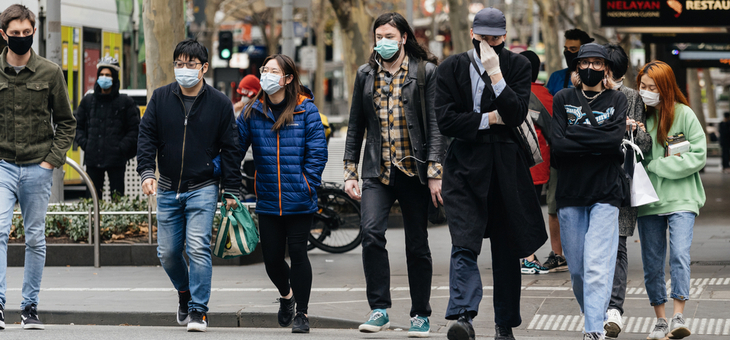Coronavirus cases in Australia could increase to more than 2800 a day by the start of July, according to a “worst case” estimate from a US government model.
We may have a trans-Tasman travel bubble set to start, but couple the modelling predictions with vaccine supply issues and an intensifying focus on the AstraZeneca vaccine and blood clots, and the outlook for winter appears to be sobering.
The forecasts by the Institute of Health Metrics and Evaluation at the University of Washington predict that COVID cases in Australia could surge to more than 1300 new infections a day as winter approaches. And it finds that in a “worst case” scenario – where the vaccine program continues to stagger rather than surge – that number could be 2800 new infections per day by the start of July.
“These IHME forecasts are some of the best you can get,” said Dr Benjamin Ryan, an Australian and public health expert at Baylor University in Texas.
Read more: States hit back at PM over ‘misleading’ vaccine rollout
He told The Australian: “I don’t know how Australia gets out of this situation without a surge in cases at some point. The evidence is increasingly that at some point you have to reach herd immunity.”
The forecasts were updated on 1 April and predict infections, deaths and hospitalisations in different countries and US states based on the “observed impact of the virus, its seasonality, vaccination levels and likely policy responses by governments”.
Theo Vos, a professor of health metrics at the University of Washington, says: “Given the high mobility, low use of masks, and seasonal pattern starting to work against Australia, we would expect a higher number of COVID cases there.”
He says Australia is in an unusual situation because most cases are “imports not home-grown infections” and cautions that snap lockdowns and strict border controls are likely to be an ongoing reality.
Read more: Australia in war of words with EU over vaccine shipments
Dr Ryan says some tough decisions are required on what number of community COVID cases is deemed acceptable to allow Australia to re-open borders. He says “zero COVID” isn’t realistic unless international borders remain permanently closed.
“To avoid this scenario, Australia would need to vaccinate 70 per cent to 85 per cent of its population, including children, which will be very difficult,” he says.
Texas, which controversially lifted all restrictions last month, offers the best model for Australia to “live with the virus”, he adds.
“Hospitals in central Texas were able to continue providing care for the entire community during the winter surge.
“Now all the restrictions are gone pretty much and things are getting back to normal.”
In other news, The Age has revealed that Australia’s early vaccine rollout, which was 3.4 million doses short of its 4 million target by the end of March, has been propped up by 717,000 doses manufactured in the UK.
Accurate and reliable up-to-date information is proving to be a difficult commodity in relation to the vaccination program, but Prime Minister Scott Morrison said on Tuesday that vaccine data transparency is on the agenda for Friday’s National Cabinet meeting. Stay tuned.
Are you prepared for the long-haul battle with COVID – especially as winter approaches? Are you concerned about the links between AstraZeneca and blood clots?
Read more: COVID jab or flu shot first?
If you enjoy our content, don’t keep it to yourself. Share our free eNews with your friends and encourage them to sign up.

